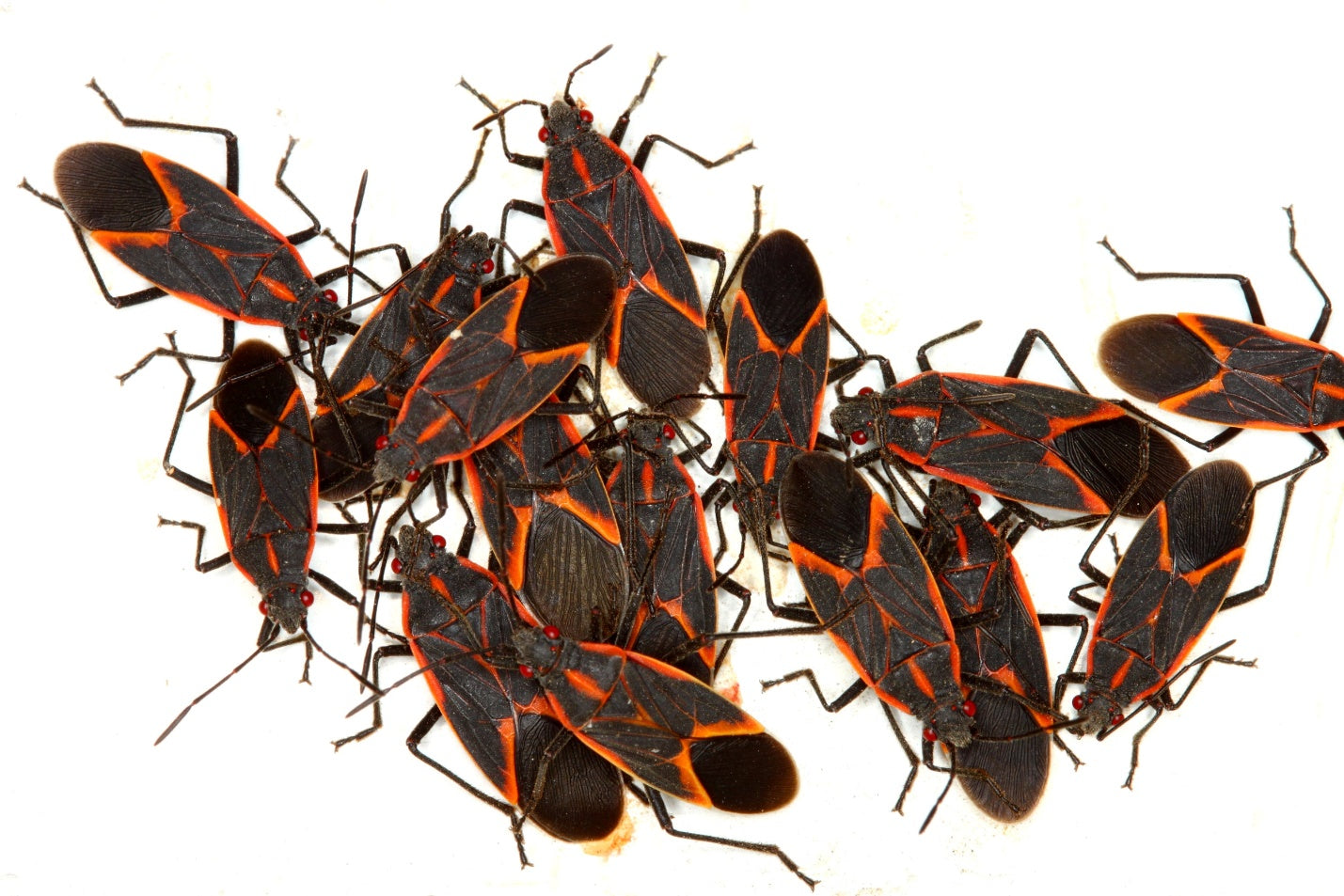
Boxelder Bugs: Everything You Need to Know
If you have maple, ash or boxelder trees on your property, you may also have a pest that prefers your landscaping: boxelder bugs. These fascinating little creatures can be quite irritating when they hang around the bases of your trees or congregate on driveways and windowsills with lots of sun exposure. Whether you have a boxelder bug infestation or are just interested in learning more about this insect, here is everything you need to know, including the lifecycle and how to get rid of them.
The Life Cycle of Boxelder Bugs

If you want to understand more about the boxelder bug and how it behaves, start with its life cycle. The boxelder bug emerges from the ground during spring when the weather starts to warm up. They feed on ground plants and seeds and will begin mating a few weeks later. In the summer, as the weather gets hot enough, they will move to seed-bearing boxelder, ash or maple trees and lay eggs on the trunks, branches and leaves.
Once the temperatures cool down in fall, the boxelder bugs will leave their all-inclusive summer tree resorts and look for a good spot to spend the winter in hibernation. These bugs can fly quite a distance of up to two miles. This seasonal shift is when you may notice boxelder bugs in your house, but they will be most apparent after winter ends. Boxelders tend to move in during late fall and early winter when they look for a warm place to overwinter.
Nuisance Rather Than Danger
Boxelder bugs don't do much to help or harm you. They are only on your property because of the tasty ash, boxelder or maple seeds that are the mainstays of their diet. They won't damage your house or spread disease, and they aren't into biting people. They just want to eat their seeds, mate and enjoy the warmth of a sunny spot. They can emit a smelly, yellow liquid secretion that attracts more boxelder bugs, especially if you squash them, making it an ineffective pest management strategy.
All About Infestations
Boxelder bugs tend to move in large numbers. If a group of boxelder bugs decides your house is a good hiding spot from the cold, you will likely notice them once they wake up. The insects will follow the warmth into your house's living and sunny areas. Once it gets hot enough, the boxelder bugs will become active again and likely leave your house. However, some may not be successful in their journey; they may end up trapped inside, which isn't ideal for you or them.
As with any infestation, the best way to manage boxelder bugs is to keep them out of your house in the first place. While they will not breed indoors, trapped boxelder bugs may annoy anyone living on the property. These bugs can stain walls, curtains and furniture with their excrement, turning surfaces an orange-brown color.
The easiest way to eliminate boxelder bugs is to remove your boxelder trees, but those beautiful plants didn't do anything to deserve that fate. Instead, you can prevent a boxelder bug infestation by sealing all possible entry points before autumn. Replace weatherstripping and caulk around windows, screens, cable entries and doors. For stucco, plaster or brick buildings, seal any cracks and gaps that may have become apparent over time.

From Boxelder Bug Prevention to Elimination
What do you do if you see boxelder bugs in your house? Because they have a short lifespan of just a few weeks, you shouldn't use insecticides inside. Instead, remove them with a vacuum or broom, trying not to squish them and leave a stain. Since boxelder bugs move on to trees in the summer, they don't overstay their welcome, but most homeowners would prefer they don't come inside at all.
If you have questions about handling a boxelder infestation, don't hesitate to reach out to the professionals at MosquitoNix®. We have years of experience and expertise to help you protect your home against pests or eliminate them once they arrive. Contact our customer support team to learn about our services and receive a free estimate.
Leave a comment
Comments will be approved before showing up.




